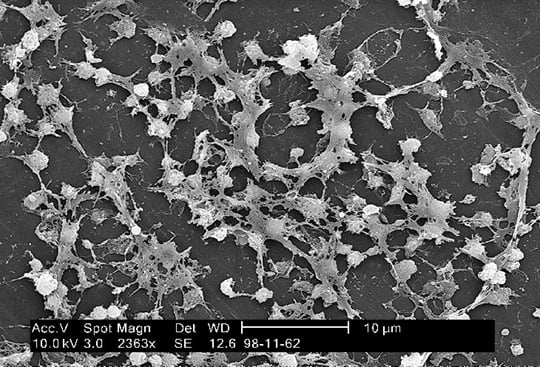Modes of Transmission

Thin slime layer (film) which is an aggregate of microorganisms (e.g. bacteria, algae, fungi, protozoans) occurring at interfaces primarily in aqueous environments (on the water surface or at the interface to a solid phase).
However, biofilms are generally capable of colonising any interface: between gas and liquid phases (e.g. free water surfaces), liquid and solid phases (e.g. gravel on water body beds) or between different liquid phases (e.g. oil droplets in water).
The interface the biofilm attaches to is called substratum.
Other, more colloquial terms for biofilm are: growth, mould film, sewer film.

Attachment: Bacteria floating in a solution attach to a surface. To support this attachment, the bacteria extract organic compounds that form a slime layer on the surface.
Colonisation: The bacteria begin cell division and form microcolonies via continued cell-to-cell communication.
Growth: Continuously growing, the biofilm on the surface gradually develops into a multilayer, 3D-structured colony.